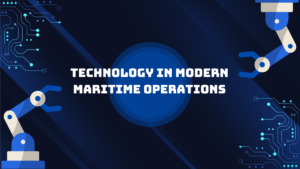The concept of a “Maritime Technologies Complex” encompasses a specialized hub focused on the advancement and integration of various technologies related to the maritime sector. This complex is designed to foster innovation, research, and development in maritime technology, which is crucial for enhancing the efficiency, safety, and environmental sustainability of maritime operations.
As global trade expands and environmental concerns become more pressing, the role of such complexes becomes increasingly significant in addressing the multifaceted challenges of the maritime industry.
Historical Context and Evolution
The historical context and evolution of maritime technologies is a broad and intricate subject, reflecting the development of human civilizations alongside their needs and interactions with the sea.
Here’s a concise overview:
Ancient Innovations
The earliest maritime technologies emerged with ancient civilizations’ need for fishing, trade, and exploration. Early boats were simple constructions made from hollowed tree trunks, known as dugouts. The Egyptians advanced maritime technology around 3000 BCE with the construction of large wooden ships driven by rowers and sails, navigating the Nile and the Mediterranean.
Classical and Medieval Advancements
The Phoenicians, known for their maritime prowess, developed advanced sailing ships and navigational techniques around 1200 BCE, enabling them to traverse the Mediterranean and even venture into the Atlantic. During the medieval period, the Vikings constructed longships that were highly maneuverable and capable of oceanic voyages, reaching as far as North America.
Age of Discovery
The 15th to 17th centuries, known as the Age of Discovery, saw significant advancements due to the European exploration of the world. Innovations such as the caravel, which combined the speed of the longship with the capacity of earlier merchant ships, allowed for faster and safer oceanic voyages. The magnetic compass and the astrolabe improved navigation, making it more reliable over long distances.
Industrial Revolution
The Industrial Revolution in the 18th and 19th centuries marked a dramatic shift in maritime technologies. The introduction of steam-powered ships in the early 19th century revolutionized sea travel, reducing reliance on wind. Iron and steel ships soon replaced wooden ones, allowing for larger and more durable vessels.
20th Century to Present
The 20th century witnessed the advent of motorized ships and significant advancements in navigation and safety technologies, such as radar and GPS. Containerization transformed shipping in the mid-20th century, massively increasing the efficiency and scale of cargo transport.
Today, maritime technology continues to evolve with the development of automated and unmanned vessels, advanced satellite communication systems, and increasing emphasis on sustainability, including the use of alternative fuels and energy sources to reduce the environmental impact of maritime activities.
Throughout history, maritime technology has been a crucial driver of globalization, impacting trade, warfare, and cultural exchange. Each technological leap forward has brought the world’s cultures closer together, facilitated by the ever-growing capability of ships to connect distant shores.
Core Components of Maritime Technologies Complexes
A typical maritime technologies complex features several key components, each serving a distinct function while synergistically contributing to the overarching goal of maritime advancement. These components often include:
- Research Laboratories: Dedicated spaces where scientists and engineers conduct experiments and develop new technologies.
- Simulation Centers: Facilities equipped with advanced simulators to replicate maritime scenarios for training and research purposes.
- Educational Institutions: Often, these complexes are associated with academic institutions offering specialized programs in maritime studies, which help in nurturing a new generation of maritime professionals.
- Startup Incubators: These areas support emerging companies focusing on maritime technologies, providing them with the necessary resources and mentorship to bring innovative ideas to market.
- Testing and Certification Centers: Facilities where new maritime technologies are rigorously tested and certified according to international standards.
The Role of Technology in Modern Maritime Operations

In modern maritime operations, technology plays a pivotal role, transforming traditional practices and enhancing efficiency, safety, and environmental sustainability.
Here’s an exploration of the key technologies and their impacts:
Navigation and Communication
Advances in satellite navigation systems, such as GPS, GLONASS, and Galileo, have revolutionized how vessels navigate the oceans. Real-time data transmission allows for precise positioning and routing, reducing the risk of collisions and groundings.
Modern satellite phones, internet, and VHF radios ensure vital, continuous communication for ship-to-shore coordination and emergencies.
Automation and Digitalization
Automation in maritime operations is increasingly prominent, from automated navigation systems to fully autonomous ships. These technologies reduce the need for manual intervention, decrease human error, and potentially lower staffing requirements on vessels.
Digitalization through technologies like blockchain is also significant, particularly in logistics. It enhances the shipping supply chain’s transparency and efficiency by offering secure, real-time cargo status and location data.
Safety and Surveillance
Technological advancements have also significantly enhanced maritime safety. Modern ships utilize advanced radar, AIS, and ECDI systems to enhance situational awareness and prevent accidents.
Environmental Impact
With increasing awareness of environmental issues, technology is crucial in promoting sustainability in maritime operations. This covers scrubber systems for cutting sulfur emissions, ballast water treatments against invasive species, and LNG-powered ships reducing pollutants.
Predictive Maintenance
Advancements in IoT (Internet of Things) and AI (Artificial Intelligence) have ushered in predictive maintenance for ships. Sensors installed on various components collect data in real-time, which is analyzed to predict equipment failures before they occur.
This proactive approach minimizes downtime, extends the life of ship components, and reduces maintenance costs.
Energy Efficiency
In the pursuit of reducing the carbon footprint, maritime technology is shifting towards more energy-efficient solutions. This involves developing hybrid and fully electric propulsion systems and software to optimize fuel use and lower emissions.
The Maritime Technologies Complex is a cornerstone in the landscape of global maritime operations. It embodies the convergence of innovation, education, and industry, driving forward the technological frontiers of the maritime sector.



